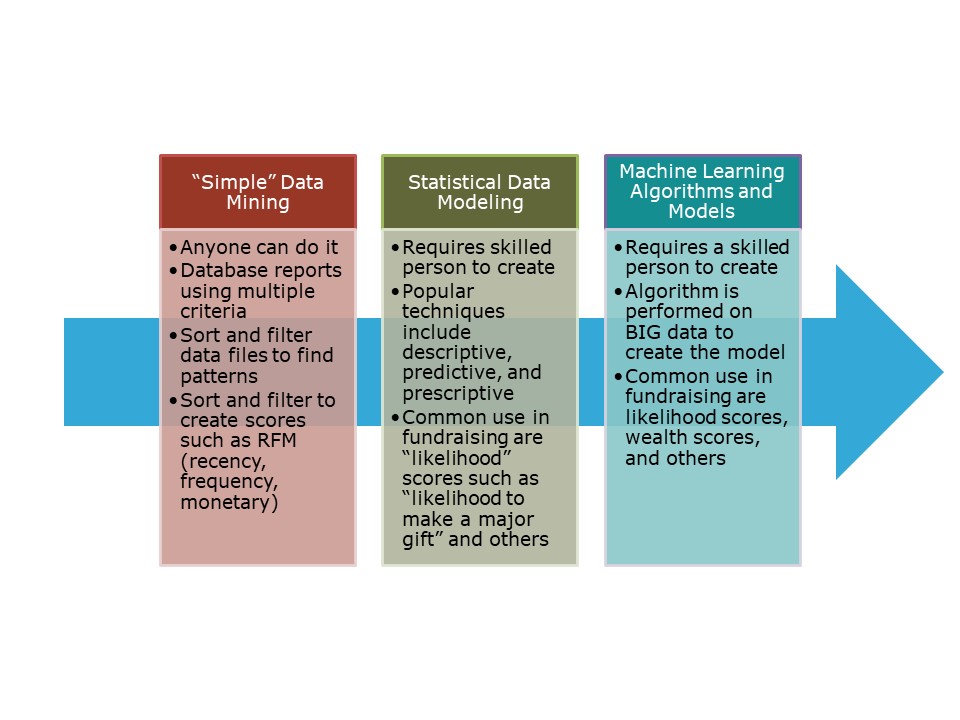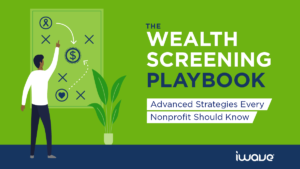Remember when you were six years old and you walked into the toy store? A huge building chock full of every toy imaginable! Now imagine that your favorite uncle says you can pick out any toy you want, so long as it’s under $50. The sheer awesomeness of this proposition for your six-year-old self is overwhelming. Without some additional guidance, it’s almost mean.
Now imagine that you have even $10,000 to buy data and research tools to support your fundraising efforts. I’m thrilled to suggest that it can be just as overwhelming as that toy store! So many tech companies are starting-up with a focus on nonprofits first that it’s amazing, but also challenging. There is so much happening it can be difficult to even know what is available.
The marketplace isn’t the only thing changing. Naturally, best practices are changing along with the tools new to market. It is a truly exciting time to be in prospect research as the data world shifts beneath our CRM databases!
Today I want to talk about a new kind of toy, I mean, tool. There are a lot of different monikers out there hoping to snag a customer–insight, score, intelligence–but these machine learning algorithms–sometimes lumped in with AI (artificial intelligence)–are decidedly different from what has been available to us in the past two decades.
| What is machine learning vs. artificial intelligence? For an explainer article, click here. For an explainer video, click here. |
Machine Learning (“ML”) Algorithms
Whether you are doing your ongoing prospect identification or seeking to segment or filter your donor prospect pool for any number of fundraising reasons, ML Algorithms essentially score your constituent records on request. These scores answer questions such as the following:
- Who likes to receive phone calls?
- Who has an affinity for children’s healthcare?
- Who is likely to have higher education and not have children?
The fundraising questions can be endless in variety…
But you’ve heard all of this before, haven’t you? And for years and years, right? It’s predictive modeling or some variety of statistical data modeling and you may even be using these models right now to provide you with great scores.
So, what makes ML Algorithms different?
Data Mining on Steroids
All of the activity we perform to identify, segment, and filter our constituents falls under the term “data mining.” It’s cool and absolutely everyone does it! Every time you ask for a report with multiple criteria, such as “all donors who have given more than $5,000 in the past year,” you are doing data mining.
But ML Algorithms are different. They are BIGGER. But does that make them better? And how is this different from a common best practice, such as wealth screening?
The figure below is a simplified distinction between the three groups of activities we perform on constituent data for fundraising purposes.
All three groups of activities could involve strictly internal data, such as your donor names, giving history, etc. Or they could include external data such as matching and appending real estate addresses and market values, gifts to other organizations, nonprofit board leadership, private foundations, and much more. Traditional prospect wealth screenings match external data to internal data and provide some scores, most often mathematical calculations such as capacity ratings based on visible asset values.
It has been a best practice to match external information to our donor prospects AND have statistical data modeling performed on the information in our database. We prospect research professionals then leverage the additional information about wealth and philanthropy and the modeled score, to identify new major gift prospects.
Sounds familiar so far, right?
ML Algorithms can be applied to your internal data, but for now, are often way more effective if they take your constituent data and match it out to the world of BIG data. Because, if your organization is like the majority of organizations in the US, your CRM is small data. BIG data are the huge datasets collected and constantly growing in social media, marketing, and so many more places.
Statistical data modeling is limited by the number of data points that can go into a model. However, ML Algorithms can handle this massive mess of data and build somewhat shockingly accurate insights or scores.
My favorite example of ML Algorithms being right is when Target began mailing coupons for baby items to a household in 2012 where the teen daughter was pregnant – but had not yet told her family. Yikes!
Is Bigger Always Better?
Now that you understand the basic differences between simple data mining, statistical data modeling, and ML Algorithms, how does that help you decide what to buy? Is the BIG data available to ML Algorithms make it better?
Of course, your purchasing decision is going to depend on what you are trying to accomplish with the tool. But my hope is that you are now equipped to read the company marketing materials and ask the important questions to make the best purchasing decision.
For example, your internal data is GOLD! You can get very far using it better in fundraising. But if that is no longer enough for you and your team, you can still do quite well to add the traditional prospect wealth screening (especially if there is an ML Algorithm add-on available).
If traditional screenings are not enough for your constituency – and this is often the case if your donors contain a lot of diversity – then ML Algorithms based on external data can be an exciting breakthrough! Diverse donors are often overlooked when considering visible asset values – for lots of reasons.
One last tip on when big is better: if your organization does not have its own big data, be sure that the tool you purchase is offering an ML Algorithm score based on EXTERNAL data, and not your own INTERNAL data. You need a boost, not a belly flop!
Beyond the Tool
Taking you back to the beginning of this article, remember how I mentioned that it was almost mean to drop a six-year-old into a store with $50 and no guidance on how to choose a toy? All of these new tools on the market have deep implications for the field of prospect research. And one of them is that the trained prospect research professional takes on a new role, guiding its organization to make great purchasing decisions, but more importantly, to then use these tools effectively so that the organization’s fundraising can reach a new level of efficiency and growth.
I don’t know about you, but I get just as excited as that six-year-old in the toy store when contemplating the world of information technology that is unfolding before us!
Additional Resources
- Predictive Insights a la carte with Shawn Olds at boodleAI | Prospect Research #ChatBytes | 2022
- Is Gratitude a Feeling or an Algorithm (or both)? | Nathan Chappell on Prospect Research #ChatBytes | 2019
- A.I. Prospect Research Links Collection | Aspire Research Group LLC
- Artificial Intelligence 101 for Nonprofits | boodleAI | undated
- Top 5 Statistical Data Analysis Techniques: Statistical Modelling vs Machine Learning | AnalyticSteps.com | 2020
- How Target Figured Out A Teen Girl Was Pregnant Before Her Father Did | Forbes | 2012


